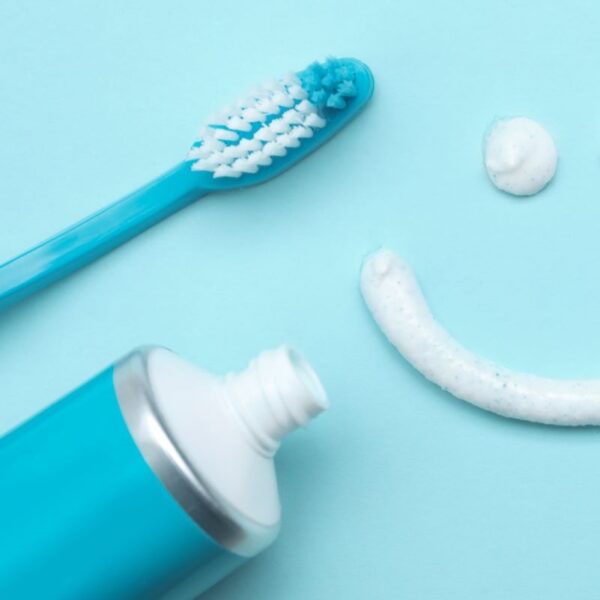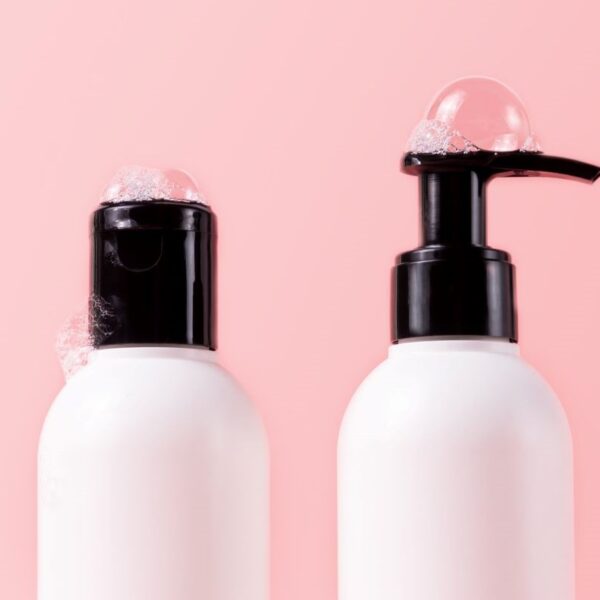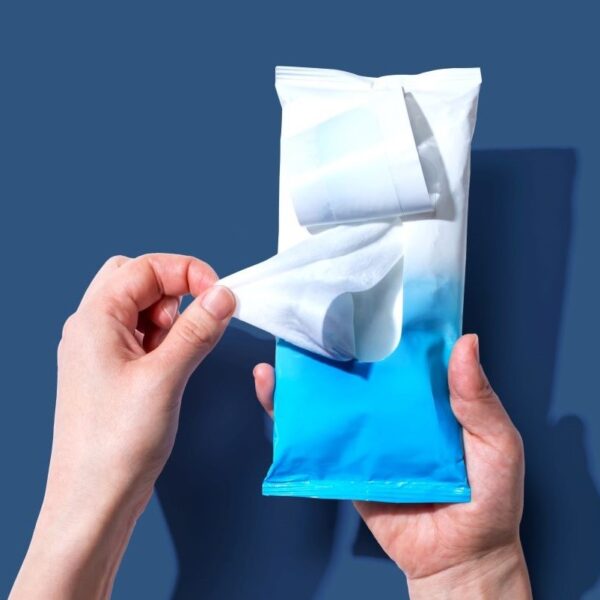Pyridoxine hydrochloride is a safe and effective nutrient with numerous benefits for the skin and hair. This article will explore its usage, functions, and formulations in cosmetics and personal care products.
What is Pyridoxine Hydrochloride?
Pyridoxine hydrochloride is the hydrochloride salt form of pyridoxine (C8H11NO3), also called vitamin B6, a water-soluble vitamin. This vitamin is essential for blood cells and the nervous and immune systems of the human body. It is obtained from various food sources such as milk, fish, fruits, and vegetables. Pyridoxine hydrochloride is converted into the active form, pyridoxal 5′-phosphate (PLP), an essential cofactor in many enzymatic activities, including the synthesis of amino acids, neurotransmitters, and sphingolipids.

Topically, Pyridoxine assists in the balancing of sodium and potassium as well as promoting red blood cell production. In haircare products it is used as a preventative for dandruff, eczema, and psoriasis.
Use of Pyridoxine Hydrochloride in Cosmetics and Personal Care
One of the primary functions of pyridoxine hydrochloride is to help maintain healthy skin. Pyridoxine hydrochloride is used in cosmetic products as a hair and skin conditioning agent. As we age, our stores of vitamins or other crucial elements are depleted, so it is better to apply them externally. It has anti-inflammatory properties that can help soothe irritated or inflamed skin, making it a popular ingredient in skin care products for sensitive skin or conditions such as eczema or psoriasis. Additionally, vitamin B6 can help regulate sebum production, which can help prevent acne and other skin issues.
In hair care products, pyridoxine hydrochloride is often used to strengthen and nourish hair. It can help improve hair elasticity, which can reduce breakage and improve the overall health of the hair. This vitamin can also help stimulate hair growth and prevent hair loss, making it a popular ingredient in hair loss prevention products.It is also used in formulas for bath products, soaps, detergents, cleaning products, and other skin and hair care products.
Applications in Cosmetics and Personal Care
Here is a detailed breakdown of its functions:
| Function | Applications |
|---|---|
| Anti-Dandruff | It is also known to prevent conditions like dandruff and eczema. Vitamin B6 (pyridoxine hydrochloride) stimulates hair’s healthy-looking appearance and contributes to anti-dandruff products’ efficacy. |
| Antioxidant | As an antioxidant, pyridoxine hydrochloride scavenges off the free radicals formed due to exposure to environmental factors like radiation, pollution, and other toxic chemicals. These free radicals break down collagen, hindering the skin repair process, which leads to inflammation, fine lines, wrinkles, and infections (like acne and dark spots). It reduces these visible signs of aging. |
| Conditioning | As a skin conditioning agent, it forms a protective film on the skin surface and makes the skin appear smooth and soft. Prevents moisture loss from the skin and lubricates it. It also helps maintain the balance of sodium and potassium ions. Conditioning agents are essential in the sensory perception of shampoos, conditioners, skin cleansers, creams, and lotions.It improves the texture of the hair, conditions it and makes it healthier. |
| Anti-Acne | Topical vitamin B6 appears to reduce sebum levels and limit the area of oily spots, thus reducing oily acne and preventing acne vulgaris. These acne-reducing properties make it suitable for application in anti-acne products for oily and acne-prone skin. |
Product Examples
Pyridoxine hydrochloride is used in the formulation of many personal care products. Here are some examples:
| Type | Examples |
|---|---|
| Haircare | Anti-dandruff shampoos for oily scalp |
| Skincare | – Anti-acne products, including serums, creams, and lotions – Oil and sebum control toners and mists for oily skin – Active skin cleansers containing vitamins for oily skin – Anti-wrinkle products, night repair, restoring creams, and serums |
| Other Personal Care Products | Bath products, soaps and detergents, and cleansing products |
Properties of Pyridoxine Hydrochloride
| Appearance at 25 °C | White crystalline powder |
| Odor | Odorless |
| pH (10% Aqueous) | 2.4-3.2 |
| Viscosity, cps at 25°C | 60-75 |
| Solubility | – Water soluble, slightly soluble in ethanol – Soluble in Propylene Glycol |
| Melting Point | 205 °C |
| Shelf Life | 36 months |
| Recommended Dosage | 0.05-0.3% |
| Storage Conditions | Store in a cool, dry place in tightly closed receptacles |
Typical Formulations
Anti-Flaking Scrub for Scalp Care
| Phase | TRADE NAME | INCI NAME | Wt.% | Supplier |
|---|---|---|---|---|
| A | – Water – Pyridoxine Hydrochloride (Vitamin B6) – Glycos Clear 70 – Jordapon SCl Powder | – Aqua – Pyridoxine HCl – Glycolic Acid, Aqua – Sodium Cocoyl Isethionate | 63.682 0.20 0.60 7.00 | – DSM – CABB – BASF |
| B | Siligel | Xanthan Gum, Sclerotium Gum, Lecithin, Pullulan | 2.50 | Lucas Meyer |
| C | – Tilamar PDO – Stimu-Tex AS – Lamesoft® PO 65 – Euperlan® Bright – Pentavitin – Alpaflor ALP-Sebum CB | – Propanediol – Argania Spinosa Kernel Oil, Tocopherol, Butyrospermum Parkii Butter Extract, Spent Grain Wax – Coco Glucoside, Glyceryl Oleate – Glycol Distearate, Sodium Laureth Sulfate, Cocamidopropyl Betaine – Saccharide Isomerate, Aqua, Citric Acid, Sodium Citrate – Glycerin, Aqua, Epilobium Fleischeri Flower/Leaf/Stem Extract, Citric Acid | 5.00 2.00 4.00 4.00 0.20 3.00 | DSM DSM BASF BASF DSM DSM |
| D | – life’s™GLA ’10’ n-6 Oil – Natpure Col Green LC720L – Perfume Pitchoune Mandacitron RS30761 | – Oenothera Biennis Oil, Tocopherol, Ascorbyl Palmitate – Cl 75810 (copper chlorophyllin) – Parfum | 0.80 0.018 1.20 | DSM Sciencelab.com Inc Technicoflor |
| E | – Celluloscrub 300 – Florabeads jojoba 28/60 Evergreen – Euxyl K 712 | – Cellulose Acetate – Jojoba esters, Chromium Oxide Green – Aqua, Sodium Benzoate, Potassium Sorbate | 3.00 1.00 0.80 | Lessonia Floratech Schulke & Mayr Gmbh |
| F | Structure XL | Hydroxypropyl Starch Phosphate | 2.00 | Nouryon |
Formulation Procedure
- Add ingredients of phase A step by step in water and mix thoroughly to get a homogeneous solution.
- Add ingredients of phase B slowly under stirring to the mixture until lump-free.
- Add ingredients of phases C and D step by step under stirring to the mixture
- Add ingredients of part E / peeling corps separately into the formulation. Stir gently.
- Add Structure XL for thickening.
Pyridoxine Hydrochloride Safety & Regulatory Considerations
Pyridoxine hydrochloride is generally considered safe for personal care products and cosmetics. However, as with any ingredient, specific safety and regulatory guidelines must be considered.
In the United States, the use of pyridoxine hydrochloride in personal care products and cosmetics is regulated by the Food and Drug Administration (FDA). The ingredient is generally recognized as safe (GRAS) when used in accordance with FDA regulations, which include limits on concentration and specific labeling requirements.
Identification Numbers
| CAS Number | 58-56-0 / 12001-77-3 |
| EC Number | 200-386-2 |
| Trade Name | Pyridoxine Hydrochloride |
| REACH Registration Number | 01-2120113157-67-0001 |
Fun Facts About Pyridoxine Hydrochloride
- Pyridoxine hydrochloride was first discovered in the 1930s by Paul Gyorgy, a Hungarian-born biochemist.
- Vitamin B6, including pyridoxine hydrochloride, is found in many common foods such as chicken, fish, bananas, potatoes, and spinach.
- A deficiency of pyridoxine hydrochloride can lead to various symptoms, including skin rashes, depression, confusion, and anemia.
- Pyridoxine hydrochloride is part of the B-complex group of vitamins, which also includes thiamine, riboflavin, niacin, pantothenic acid, biotin, folate, and vitamin B12
Additional Sources & Resources
- Use of vitamin B6 for enlarging subnormal hair bulbs and enhancing hair growth therefrom
- Evaluation of vitamin B6 and calcium pantothenate effectiveness on hair growth from clinical and trichographic aspects for treatment of diffuse alopecia in women
- Chemoprevention of doxorubicin-induced alopecia in mice by dietary administration of L-cystine and vitamin B6
- NIH – Pyridoxine Hydrochloride
- NIH National Cancer Institute – Pyridoxine Hydrochloride




